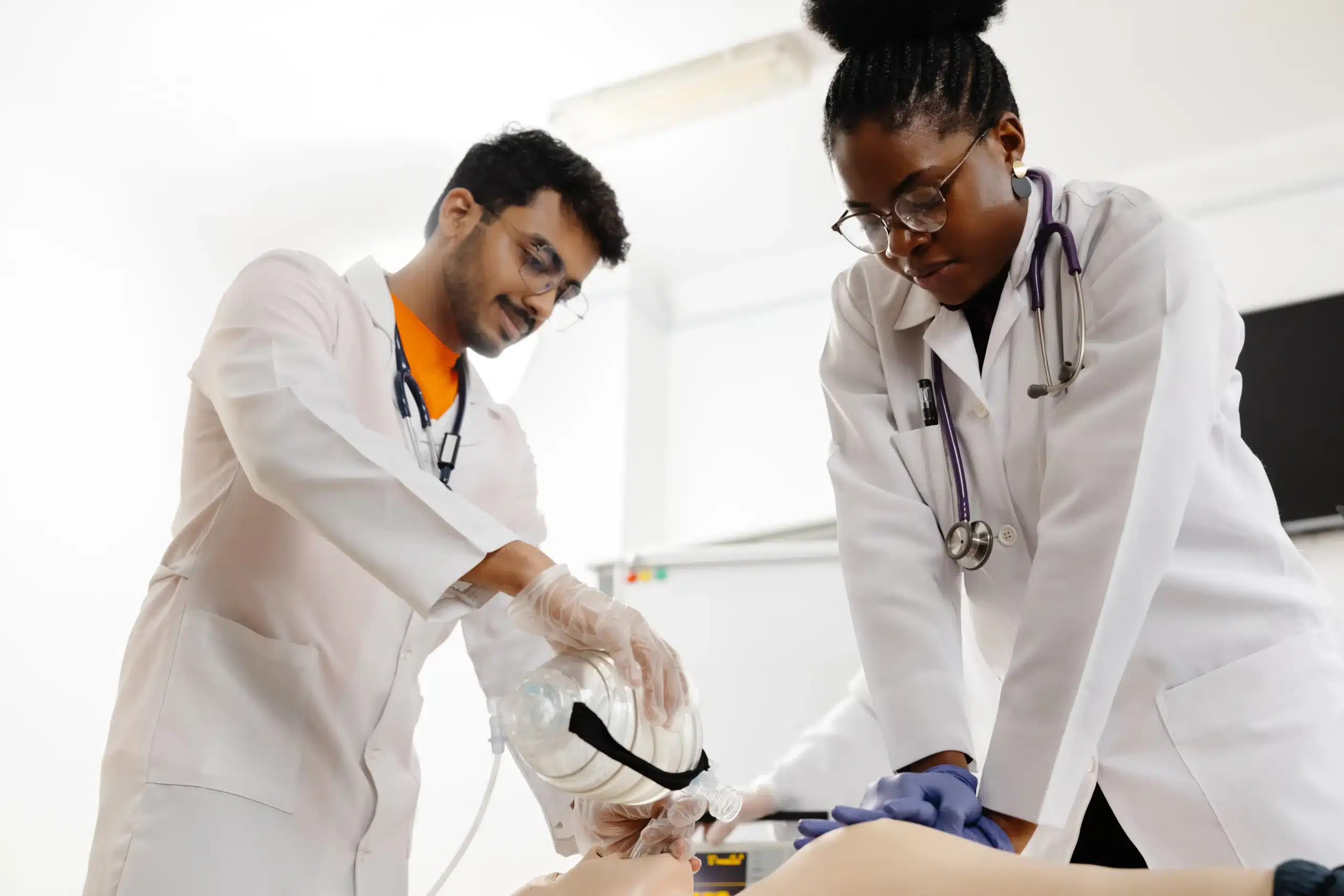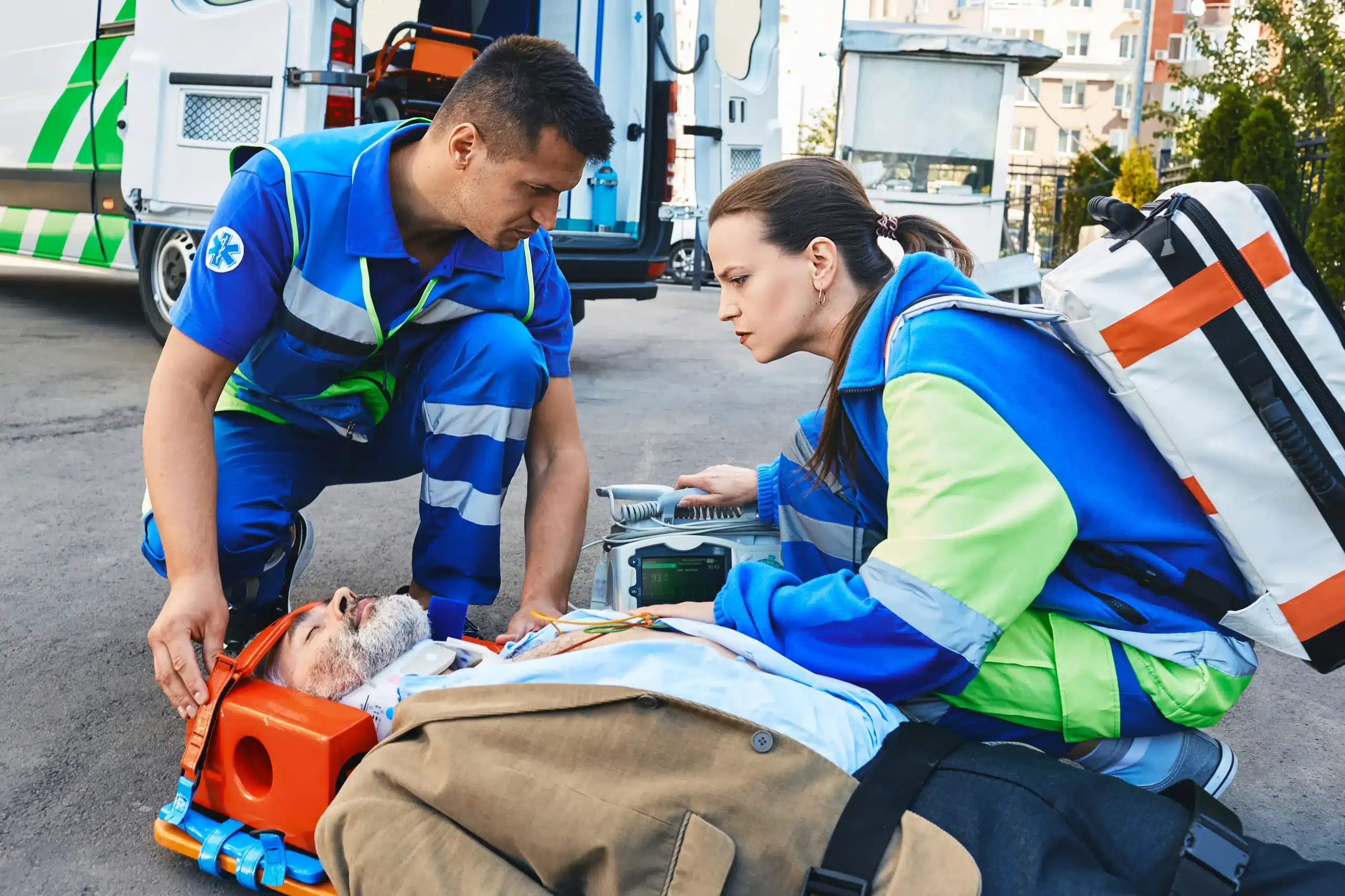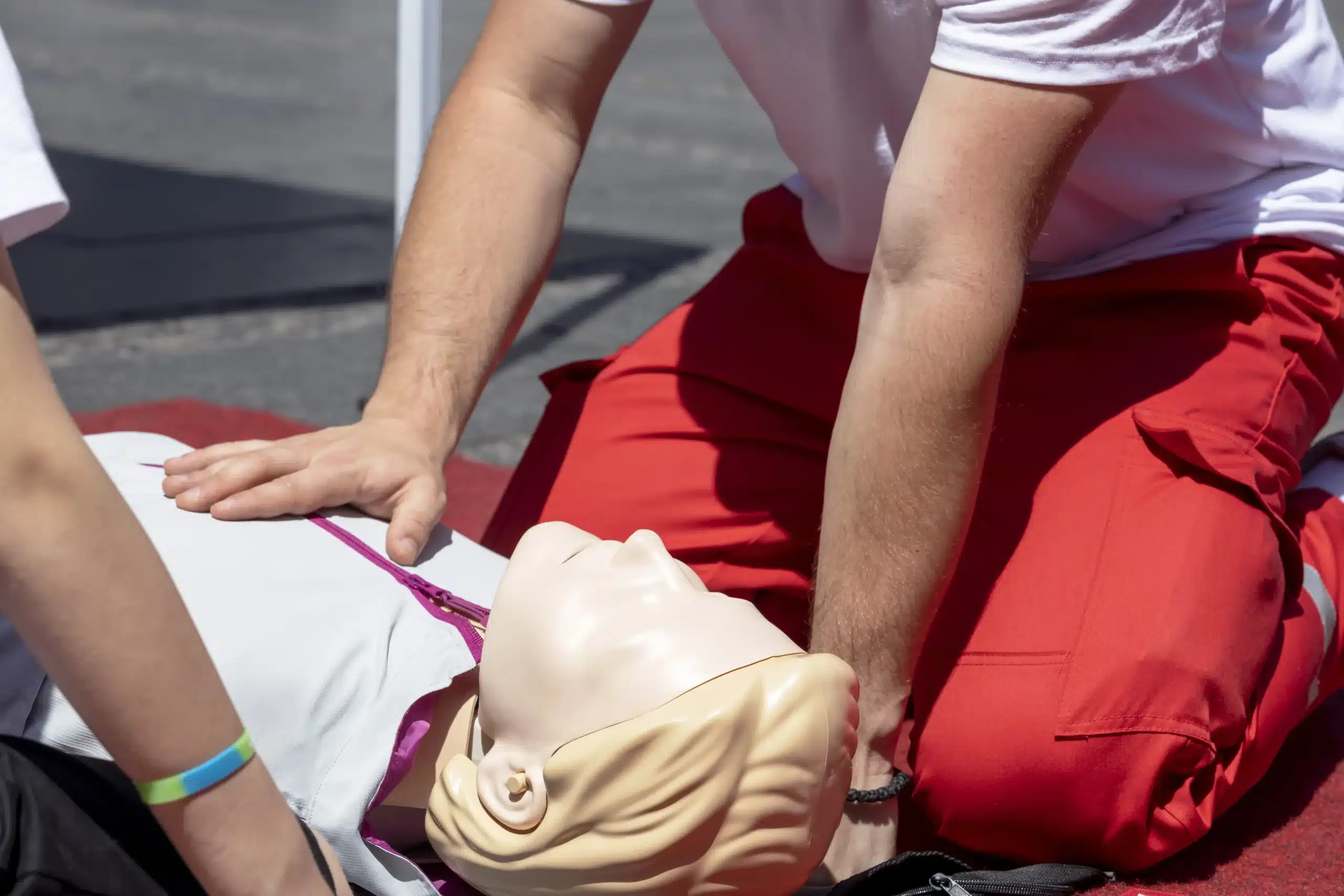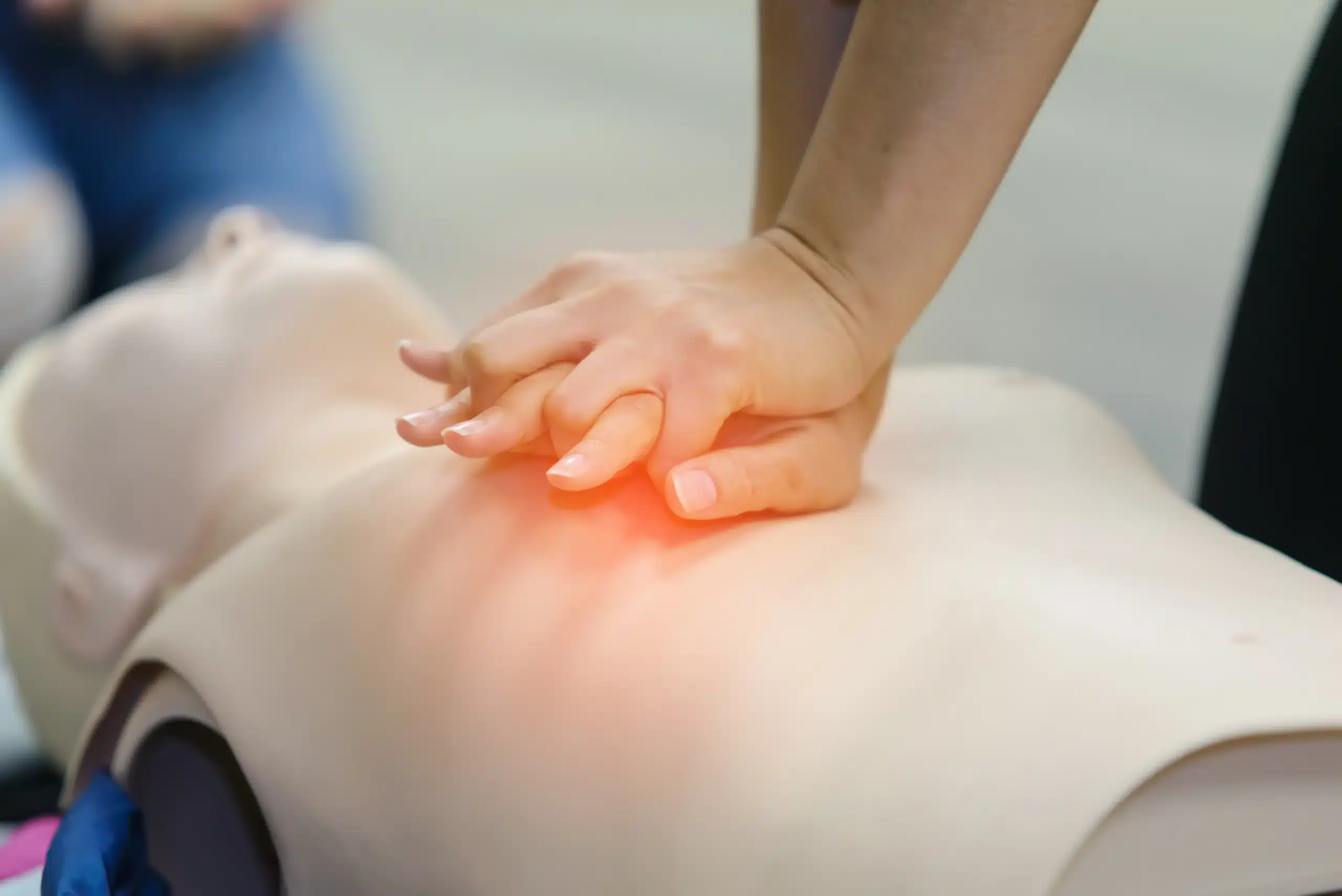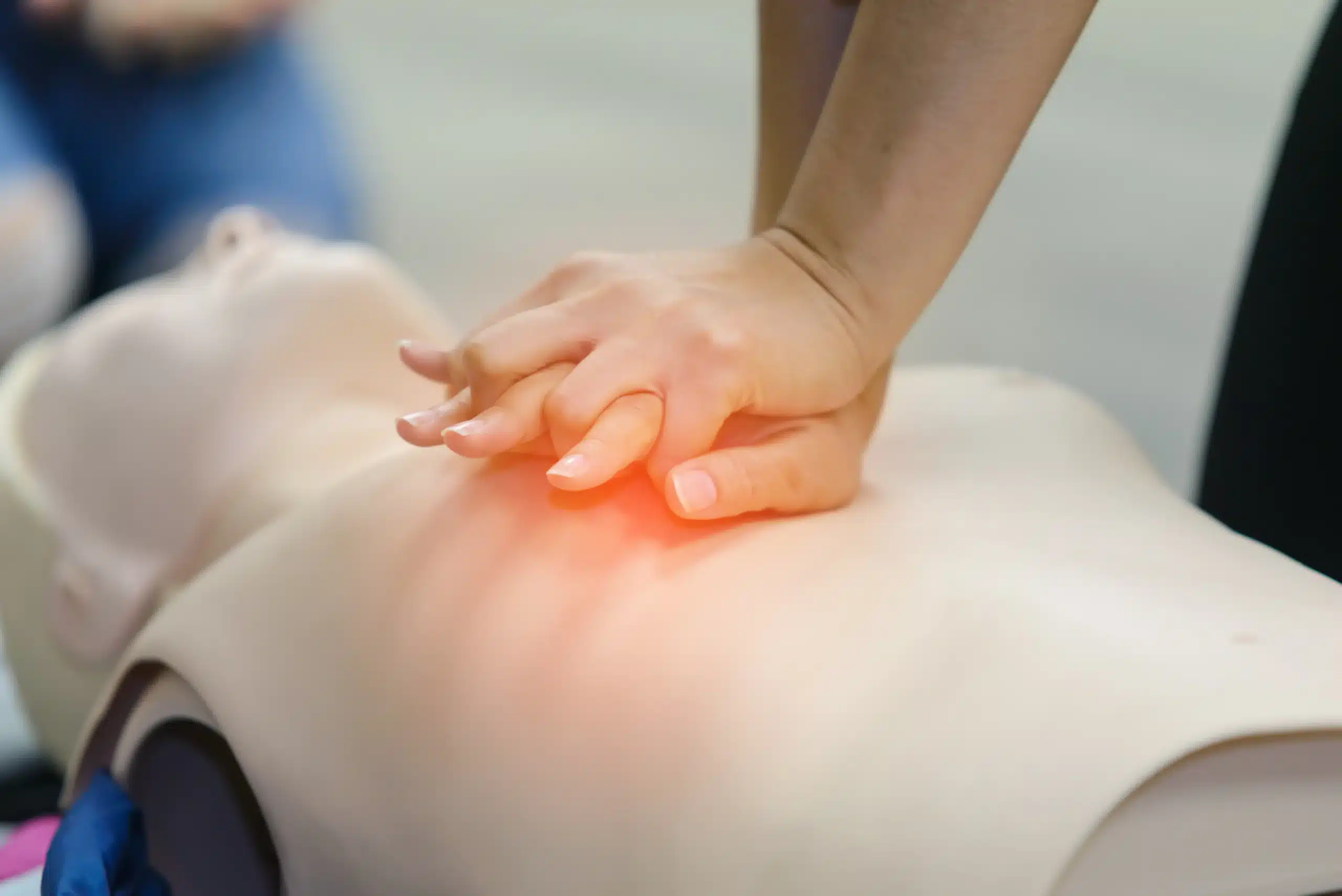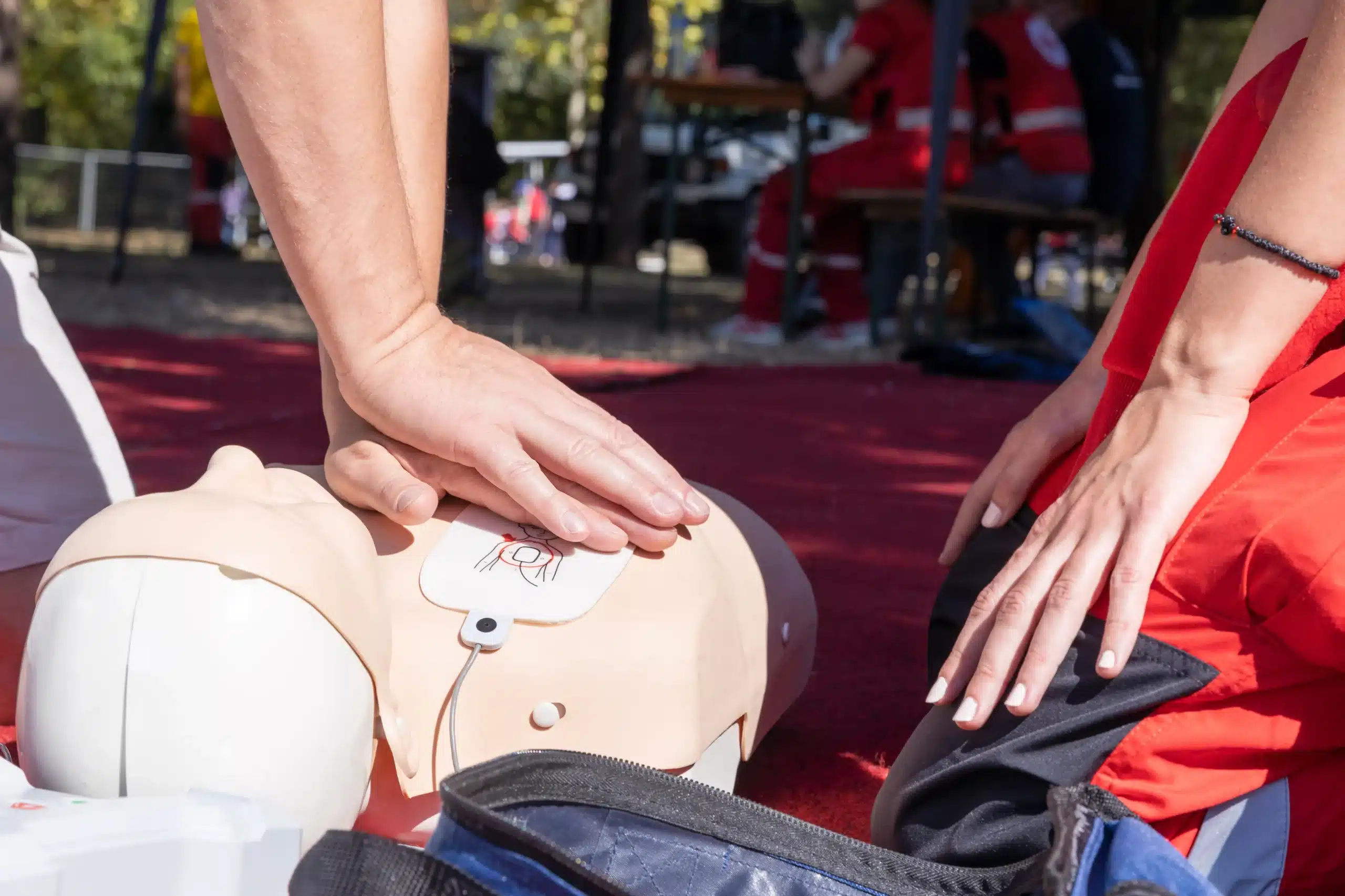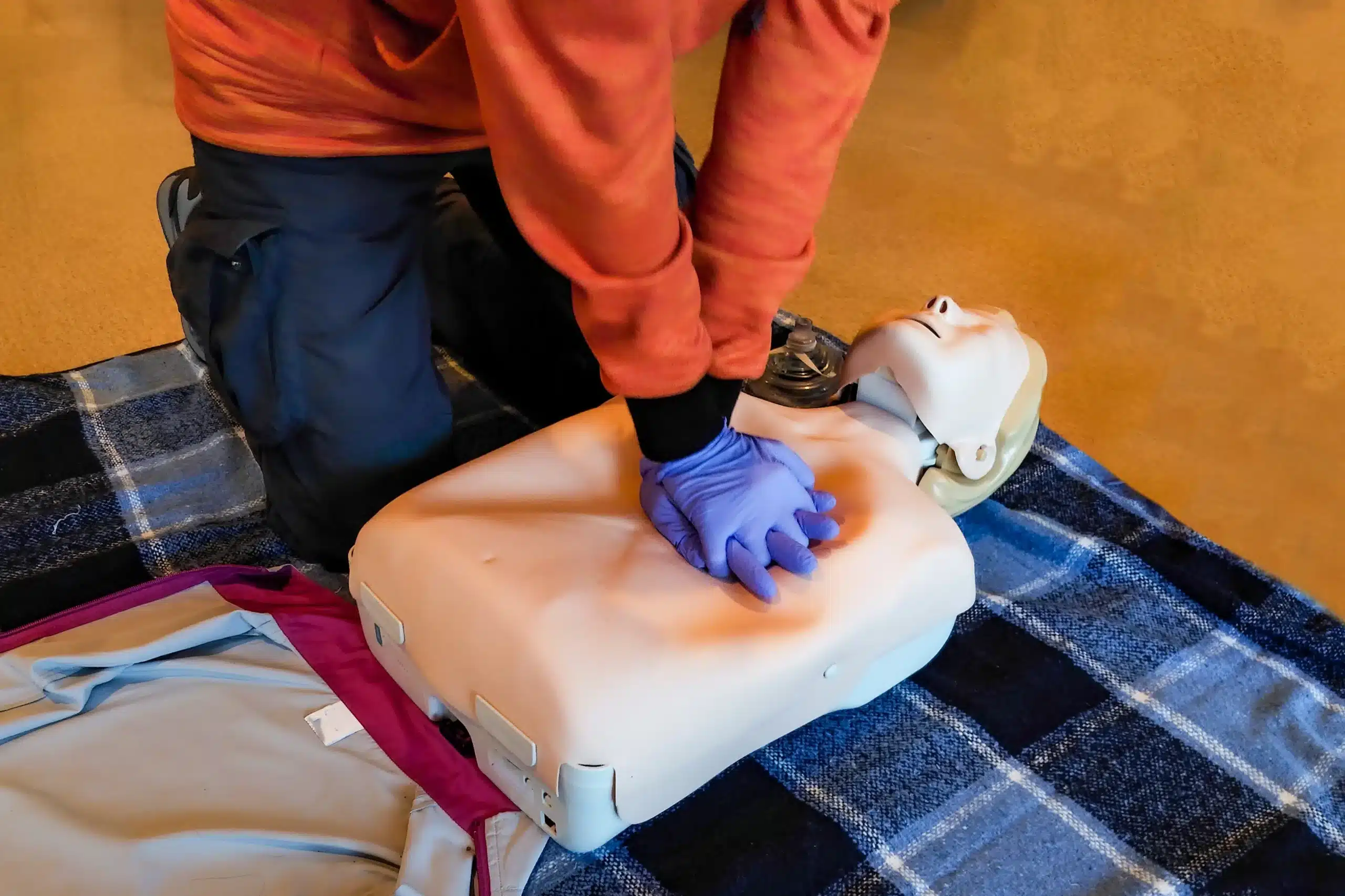Emergencies can happen anytime, anywhere. Being equipped with the skills to respond effectively can make a profound difference. Basic Life Support (BLS) training provides the knowledge and hands-on practice necessary to handle life-threatening situations. This article serves as your go-to resource for understanding BLS, including what the training entails, who benefits from it, and how to find quality “bls training near me.” We’ll also discuss the importance of choosing the right BLS provider and the value of maintaining your certification.
Key Takeaways
- BLS is more than just CPR: It combines essential life-saving techniques like CPR, AED use, and first aid with critical thinking and teamwork skills to prepare you for various medical emergencies. Look for comprehensive training that aligns with American Heart Association guidelines.
- Hands-on learning is essential: Mastering BLS techniques requires in-person training and a skills assessment, even if some coursework is online. Prioritize providers who emphasize practical application and real-world scenarios.
- Choose training that fits your needs: Consider factors like location, cost, schedule, and the provider’s reputation when selecting a BLS course. Explore options like RQI classes for convenient renewals and group discounts for team training. A low-price guarantee can also help you find affordable, high-quality training.
What is BLS Training & Why Do You Need It?
Basic Life Support (BLS) certification equips healthcare providers and first responders with the skills to handle life-threatening emergencies. It’s more than just memorizing steps; BLS emphasizes practical skills and real-world scenarios to improve patient outcomes. It’s a comprehensive approach to emergency care, giving you the confidence to act quickly and effectively under pressure. This training goes beyond the basics, focusing on a deep understanding of the techniques and the critical thinking skills necessary in high-stress situations. For those seeking American Heart Association certification, consider exploring BLS certification options.
What BLS Covers
BLS training covers essential life-saving techniques, including CPR, AED usage, and basic first aid. The curriculum also includes vital elements like scene safety, critical thinking, teamwork, and legal considerations. This well-rounded approach prepares you for various emergencies, from a heart attack to a choking incident. BLS certification provides a solid foundation for anyone working in healthcare or regularly encountering medical emergencies.
Who Needs BLS?
BLS classes cater to both new and experienced learners, including those needing recertification. Whether you’re a medical student just starting or a seasoned healthcare professional, BLS training keeps your skills sharp. It’s essential for healthcare providers and also benefits anyone who might need to perform CPR, such as teachers, lifeguards, or childcare providers. For teams, group discounts can make training more affordable.
BLS Training Myths
One common misconception is that you can get fully BLS certified entirely online. While online components can be helpful for reviewing material, the American Heart Association (AHA) requires an in-person skills assessment. This hands-on component is crucial for mastering the practical techniques and ensuring you can perform them correctly. Online resources can supplement your learning but can’t replace in-person training. For reliable and comprehensive training, explore options like our RQI classes. We also offer a low price guarantee to make quality training accessible.
Find Great BLS Training Near You
Now that you understand the importance of BLS training, let’s explore how to find the right course for you. There are several factors to consider, from the quality of the provider to the course format and cost.
How to Evaluate BLS Providers
Finding a reputable BLS training provider is the first step. Look for providers who prioritize hands-on training and real-world scenarios, like those emphasized by the American Red Cross. This practical approach is essential for building confidence and competence in emergency situations. Check if the provider offers American Heart Association certification, a widely recognized and respected standard. Also, consider the provider’s reputation and read reviews from past participants to understand their experiences. For those located in or near Palo Alto, Safety Training Seminars is a trusted provider offering a range of CPR and first-aid courses.
Online vs. In-Person BLS Training
BLS training comes in two main formats: online and in-person. While the flexibility of online learning can be appealing, the American Heart Association requires an in-person skills assessment for their BLS certification. This means there’s no completely online option if you need AHA certification. Some providers, such as ACLS Medical Training, offer 100% online courses, which can be a good option if you need basic life support training for personal reasons or non-AHA certification. Consider your workplace requirements when choosing between online and in-person formats.
Choosing the Right Course
When selecting a BLS course, think about the certification’s validity. BLS certification is typically good for two years, so factor in renewal requirements. Many providers offer renewal courses, and it’s generally recommended to renew within 30 days of expiration to maintain compliance. Convenience and affordability are also key considerations. Online options can be a cost-effective way to fit training into a busy schedule, while in-person classes offer a more interactive learning experience. Consider your learning style and personal preferences when making your decision. If you’re looking for affordable options, check if the provider offers group discounts. For a comprehensive learning experience, including RQI training, explore the courses offered by Safety Training Seminars. They also have a low-price guarantee, making them a budget-friendly choice.
BLS Course Structure & Certification
This section covers what you can expect in a BLS course, from the curriculum to the certification process. Understanding these elements will help you choose the right class and feel prepared for your training.
What to Expect in a BLS Course
BLS certification courses cater to both new and experienced healthcare providers. You’ll find courses designed for people completely new to BLS and others created as refresher courses for seasoned professionals. Expect a combination of interactive learning activities, demonstrations, and hands-on practice. A typical BLS course covers core life-saving skills, including high-quality CPR for adults, children, and infants; how to use an automated external defibrillator (AED); and relief of choking. You’ll also learn about the chain of survival and how to work effectively as part of a resuscitation team. At Palo Alto CPR Classes, we emphasize real-world scenarios and provide ample opportunity for practice and feedback. Our courses follow the latest American Heart Association guidelines to ensure you receive the most up-to-date training.
Hands-On Practice & Assessment
Hands-on practice is the cornerstone of effective BLS training. The American Heart Association (AHA) emphasizes the importance of in-person skills assessments. While some portions of a BLS course may be offered online, the skills check-off must be completed in person with a certified instructor. This ensures you can confidently perform the necessary skills in a real emergency. During the assessment, you’ll demonstrate your proficiency in CPR, AED use, and other essential techniques. Our instructors at Palo Alto CPR Classes provide personalized guidance and support to help you master these skills. We keep our class sizes small to ensure you receive individual attention.
Getting & Keeping Your BLS Certification
After successfully completing the course and skills assessment, you’ll receive your BLS certification, typically valid for two years. It’s important to keep track of your certification’s expiration date and plan for renewal. Renewal courses are often shorter and focus on reinforcing the skills and knowledge you’ve already acquired. Look for a renewal course about a month before your certification expires to ensure a smooth transition. At Palo Alto CPR Classes, we offer streamlined renewal courses to help you maintain your credentials without hassle. We also offer group discounts for companies and organizations looking to certify multiple employees. Our low price guarantee ensures you’re getting the best value for your training investment. Contact us today to learn more about our BLS certification courses and find a schedule that works for you.
How Much Does BLS Training Cost?
So, you’re ready to get your BLS certification—fantastic! Naturally, one of your first questions might be about the cost. Like most things, BLS training prices vary. Let’s break down what you can expect and what influences the final price tag.
Typical BLS Course Prices
BLS course fees typically range from $60 to $100. Some providers offer a combined CPR/First Aid course for around $85, while others price BLS certification around $95 for initial training and $65 for recertification. Keep in mind these are just examples, and prices can differ. Our BLS certification course is competitively priced, so check it out!
Factors Affecting Cost
Location plays a big role in BLS course pricing. Major cities or areas with a higher cost of living often have slightly higher course fees. The training provider also matters. Organizations like the American Red Cross have classes across the country, including various locations in Pennsylvania, each with potentially different pricing. If you’re in or near Palo Alto, Redwood City, or Menlo Park, we offer a low price guarantee on our courses. It’s always a good idea to compare a few options in your area.
Long-Term Value of BLS
Think of BLS certification as an investment. While there’s an upfront cost, the value extends beyond the initial training. Most BLS certifications are valid for two years. Renewal courses are usually available, often at a reduced price, so you can keep your skills current. Knowing you can respond effectively in a medical emergency is invaluable. Maintaining your certification ensures you’re always prepared. Plus, for many healthcare professionals, BLS certification is a job requirement. We offer convenient RQI courses to make renewals hassle-free. If you have a larger group needing certification, ask us about our group discounts!
Top BLS Training Providers
Finding the right BLS training provider is key to receiving high-quality instruction and obtaining a recognized certification. Here’s a rundown of some of the leading organizations offering BLS training:
American Heart Association
The American Heart Association (AHA) is a well-respected authority on CPR and emergency cardiovascular care. Their BLS course provides comprehensive training, covering essential life-saving techniques, including high-quality CPR. The AHA offers a blended learning BLS course combining online coursework with an in-person skills session. This flexible approach allows students to learn at their own pace while ensuring competency through hands-on practice.
American Red Cross
The American Red Cross is another trusted name in emergency training. They offer various BLS courses for healthcare providers and other professionals. Like the AHA, the Red Cross offers blended learning options, combining online learning with in-person skills checks. This format lets students learn the cognitive material at their own pace before demonstrating their skills to a certified instructor.
National Safety Council
The National Safety Council (NSC) focuses on eliminating preventable deaths and injuries. They offer a range of safety training programs, including CPR and first aid. Their BLS courses may vary in format and availability, so it’s best to check their website for current BLS training options in your area.
American Safety & Health Institute
The American Safety & Health Institute (ASHI) provides various safety and health training programs. They offer BLS courses designed to equip individuals with the skills to respond effectively in medical emergencies. Check their website for specific course offerings and schedules.
ProTrainings
ProTrainings offers online and blended learning courses, including BLS certification. Their flexible approach allows students to complete the online portion at their own pace and then schedule an in-person skills evaluation. Visit their website for details on their BLS training programs.
Palo Alto CPR Classes (Safety Training Seminars)
If you’re in the Palo Alto, Redwood City, or Menlo Park area, Palo Alto CPR Classes (Safety Training Seminars) offers convenient and affordable BLS training. They provide AHA-certified courses designed for healthcare professionals and others requiring BLS certification. Check their website for course schedules and their low-price guarantee.
Related Articles
- BLS Certification in Palo Alto: A Comprehensive Guide
- BLS Renewal in Palo Alto: Your Easy Guide – Palo Alto CPR Classes
- BLS Classes in Palo Alto: Your Complete Guide – Palo Alto CPR Classes
- BLS for Healthcare Providers in Palo Alto: Complete Guide
- Top 11 CPR Myths Debunked
Frequently Asked Questions
Is BLS certification the same as CPR certification?
BLS certification is more comprehensive than general CPR certification. It includes CPR but also covers other essential skills like using an AED and relieving choking. BLS also emphasizes a deeper understanding of the science behind resuscitation and team dynamics during emergencies. It’s designed for healthcare providers and those in roles requiring a higher level of emergency preparedness.
How long does BLS certification last, and how do I renew it?
BLS certification is typically valid for two years. To renew, you’ll need to take a recertification course before your current certification expires. Renewal courses are often shorter than the initial certification course, focusing on refreshing your knowledge and skills. It’s a good idea to start looking for a renewal course about a month before your certification expires.
What if my BLS certification has already expired?
If your BLS certification has expired, you’ll need to retake the full certification course rather than a renewal course. Don’t worry; the process is similar to your initial training. It might feel like starting over, but it’s the best way to ensure your skills are up-to-date and you’re prepared to handle emergencies effectively.
Can I get BLS certified entirely online?
While some online BLS courses exist, they might not meet all requirements for healthcare providers. The American Heart Association (AHA), a widely recognized standard for BLS, requires an in-person skills assessment. This means you can’t get fully AHA-certified BLS online. Online courses can be a great way to learn the material, but you’ll still need to demonstrate your skills in person.
How do I choose the right BLS training provider?
Look for a provider that offers AHA-certified courses, as this is a widely accepted standard. Check for reviews and testimonials from past participants to get a sense of their experience. Consider factors like location, course schedule, and cost. A reputable provider will prioritize hands-on training and real-world scenarios to prepare you for actual emergencies.
